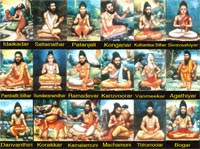In previous post, we have seen the pudam technique which is a separate and unique part of science in siddha medicine. Making pudam involves two process viz, the stove called as ulai and the level of fire to be used.
The heat here is made up of firing the woods or by firing the dried cow dung (called as varatti) or by firing the cereals. They even controlled the level of fire and heat in this process. These measurement units are taught generation after generations merely through oral communication.
They have distinguished 4 types of fire level while using wood for fire.
The fire which burns like the blossomed lotus is termed as “kamalaakini”.
The fire which resembles like the burning of torch made by cloth (pandham) is called as “kaadakkini”.
The fire which resembles the converged shape of banana flower is called “kathaliyaakkini”.
Here, the fire resembles the light like in small earthen lamp (akal vilakku) is called “deepakkini”.
It is recorded that, for each type of pudam, the type of fire used is highly significant. The pudam process becomes successful only on adhering the above suitable arrangements of heat.
We cannot expect the burning to be stable for achieving desired fire level, which may differ with change in moisture content of wood, the intensity of burning, the blowing wind etc., that’s why, for getting proper heat, they used the dried dung of cow or goat also called as varatti which will give the required stable uniform heat.
In this technique, the amount of varatti used mainly depends on the desired heat needed for medicine preparation. This concept is well clearly explained by Agathiyar in his book, “agathiyar vaatha Sowmiyam”.
Let us see the further information in this series in upcoming post.
Original – www.siththarkal.com
Translated by Lalithambika Rajasekaran






